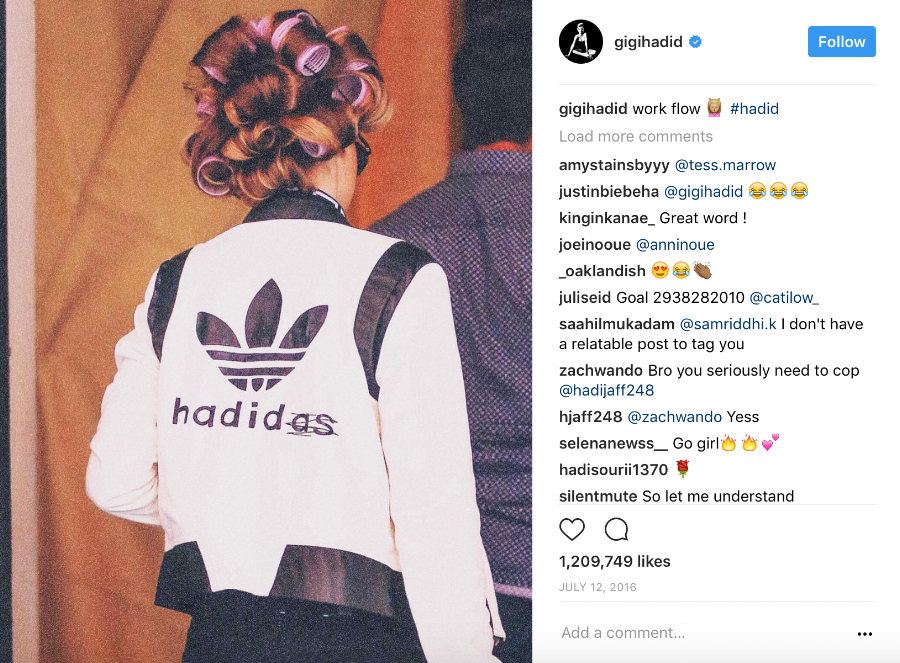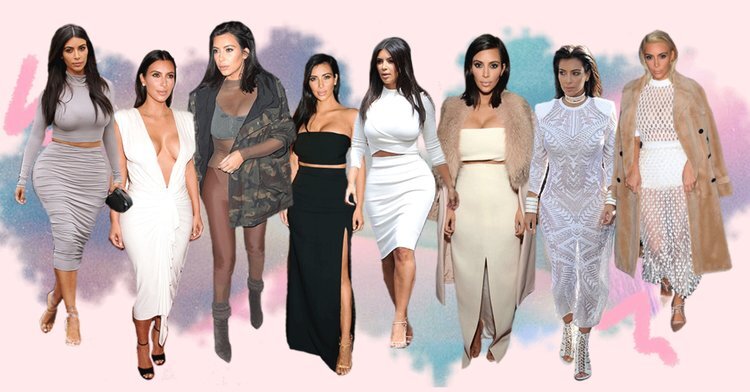This year, the filing of a particular handful of newly-initiated retail industry lawsuits and continuation of previously-filed ones stood out in the crowded landscape of litigation: ones centering on equal pay. New cases filed against the The RealReal, Walt Disney Company, and Walmart join those already pending against Nike, Avon, and Sterling Jewelers, among others, all of which see the retailers accused of gender discrimination for allegedly paying women less and offering them fewer “opportunities for advancement” than their similarly-situated male counterparts
Some of the most striking developments of the year came by way of the lawsuit that two former Nike employees filed against the Beaverton, Oregon-based sportswear giant in August 2018, claiming that it “intentionally and willfully discriminates” against women in terms of “pay, promotions, and conditions of employment.” Since then, at least 3 other women have opted to join the pool of named plaintiffs, who are seeking class action certification to enable even more aggrieved parties to join, a move that counsel for Nike unsuccessfully attempted to halt early this year.
Meanwhile, Avon and Sterling Jewelers also suffered preliminary losses this year. A New York federal judge refused cosmetics company (and behind-the-scenes “boys club”) Avon’s attempt to move the case from court to confidential arbitration proceedings, while a unanimous 3-judge panel U.S. Court of Appeals for the Second Circuit restored a nationwide class action arbitration against Zales, Jared, and Kay Jewelers’ parent Sterling Jewelers, a move that is expected to enable as many as 70,000 women to take on the largest jewelry retailer in the U.S.
These suits and others just like them – such as the case that Vice settled early this year for nearly $2 million – come as more women band together to fight against the gender pay gap, one that sees them earning some 80 cents for every dollar male employees make, and being offered fewer promotions and other advancement opportunities.
Here is a look at some of the most noteworthy domestic lawsuits of 2019 …
1. A Case Over a Defective Dog Leash Could Have Sweeping Implications for Amazon’s Business Model
One lawsuit, in particular, is worth keeping an eye on in 2020 because of the potentially sweeping effects it could have on Amazon: the suit that Heather Oberdorf first filed against the e-commerce titan in 2015 after she was severely injured by an allegedly defective dog leash that she purchased on the platform. That case had some significant developments in 2019, with the U.S. Court of Appeals for the Third Circuit holding in July that despite Amazon’s argument that it was not the “seller” of the product and was not responsible for “sourcing or shipping” of the product, the $1 trillion online retailer is liable for the damage caused by the leash.
The court decided that Amazon “plays a large role in the actual sales process” and thus, may be held liable when the products are defective, a decision that is expected to impose a greater – and potentially model-altering – level of responsibility on Amazon for the goods offered up on its marketplace. A judge has since approved Amazon’s quest to have the case reviewed en banc (i.e., in front of the full panel of judges for the Third Circuit, not the routine 3-judge panel).
2. The Supreme Court Sides with Fuct, Says Bar Against “Scandalous” Trademarks is Invalid
In a case that saw streetwear go before the nation’s highest court, Fuct – the streetwear brand whose name sounds a whole lot like the “f” word – was handed a win in June from the Supreme Court, which held – in a 6-3 decision (complete with two dissents) – that trademark law’s longstanding “prohibition on registration of ‘immoral or scandalous’ trademarks violates the First Amendment,” thereby, paving the way for “Fuct” and other marks to potentially be registered with the U.S. Patent and Trademark Office.
3. Gigi Hadid is Being Sued – Again – For Posting a Copyright-Protected Image of Herself on Instagram
In January, Gigi Hadid was sued on copyright infringement grounds for posting a photo of herself on her Instagram account. The problem? The copyright for the photo belongs to someone other than Hadid, who failed to license the image before posting it. That case has since settled, but not before counsel for the supermodel made some interesting arguments about fair use and co-authorship, and counsel for the plaintiff photo agency responded with equally strongly-worded claims of its own.
The case is significant in that it is part of a larger trend of paparazzi v. celebrity (and fashion brand) lawsuits that are filling the dockets in federal courts in New York and California, raising questions about (and shedding some light on) the role that the right of publicity plays in such situations, the routinely infringing practices of the fashion industry, and the scope of the problem that is the rapidly-growing list of these types of lawsuits.

4. LVMH Told VP, Litigator to “Simply Tolerate” Years of Sexual Harassment, Per Lawsuit
In April, LVMH Moet Hennessey Louis Vuitton landed on the receiving end of an ugly lawsuit, accusing it of “doing everything it could to bury” years of sexual harassment experienced by a female executive at its New York headquarters. According to the complaint that LVMH’s Litigation Counsel and Vice President of Legal Affairs Andowah Newton filed, she has been exposed to “sexual harassment at the hands of a senior level management employee … that continued for years” and the parent company for brands, such as Louis Vuitton, Dior, Celine, and Givenchy, among many others, did very little to remedy it.
LVMH has since denied that there is any “merit whatsoever to the allegations in Ms. Newton’s suit,” and stated that it “has clear policies prohibiting harassment and retaliation in the workplace and procedures to address any concerns raised. It should be noted that the harassment allegations relate to a member of the company’s facilities staff and not a member ‘senior management’.”
As of now, the parties are going back and forth over whether the case should remain in New York state court or be forced into private arbitration in accordance with a provision in Newton’s contract, which stated that “any disputes of any nature between you and [LVMH] will be submitted to binding arbitration.”
5. H&M is Being Sued for Allegedly Collecting and Sharing Employees’ Fingerprints
If the facts alleged in any of the noteworthy lawsuits of the year were to make it into an episode of Black Mirror, it would be this one. In April, H&M was named in an amended class action lawsuit for allegedly run afoul of the Biometric Information Privacy Act (“BIPA”), an Illinois state law that prohibits the unlawful collection and storing of biometric information, such as fingerprints, retina and iris patterns, voice waves, and DNA.
According to former H&M employee Kenyetta Slater’s complaint, in lieu of using employee ID numbers or cards to keep track of hours worked, H&M “requires hourly employees to scan their fingertips each time they start or stop working a shift.” The issue: Slater claims that the apparel behemoth did not adopt a “publicly-available written policy” governing how it will “collect, maintain, and ultimately destroy such identifiers,” nor did it obtain employees’ written consent as required by BIPA. Oh, and she claimed that H&M went a step further and shared the biometric information at issue with a third-party time-keeping vendor, also in violation of the law.
6. Skechers’ Entire Model is Based on “Copying its Competitors’ Designs,” Per New Nike Lawsuit
In a lawsuit that swiftly spawned another one and at least a couple of counterclaims, Nike filed suit against Skechers this fall, alleging that “instead of innovating its own designs and technologies,” the company maintains a “business strategy that includes copying its competitors’ designs to gain market share,” as driven by its CEO, Robert Greenberg, who simply “gives orders to knock-off competitors’ [successful] products.”
Beaverton, Oregon-based sportswear giant Nike followed up with a second suit at the end of October, asserting that Skechers has “made, used, offered for sale, sold, and/or imported into the U.S.” shoes that infringe a number of its patents, and arguing that “intellectual property rights are fundamental rights, [and] if companies cannot defend their innovation—and companies like Skechers are permitted to build multi-billion dollar businesses on the backs of creators and innovators by copying designs and technologies year-after year.”
The Nike-initiated cases are some of the latest in the high-stakes and highly litigious sportswear industry, which regularly sees the likes of adidas, Nike (and Nike-owned Converse), Skechers, and New Balance filing suits to protect the design patent and trade dress-protected designs of their footwear and the utility patents that go into making them, the trademark associated with their brand names and various logos, and even their copyright rights in some cases, and to keep their rivals from infringing upon their best-selling, staple offerings, which often come as a result of years of expensive and extensive R&D.
7. Does the Unauthorized Embedding of Social Media Posts Amount to Copyright Infringement?
A string of cases centering on the legality of (or lack thereof) embedding others’ social media posts that contain copyright-protected images made its way through courts across the U.S. this year. The latest, one filed by Justin Goldman – who spotted New England Patriots star Tom Brady in East Hampton, New York in 2016 and snapped a photo – is expected to shed more light on the important question (in the Second Circuit, at least) of whether the process of ‘embedding’ provides a defense to the defendants’’ alleged copyright infringements.”
8. Kim Kardashian is Suing Missguided, Cites Right of Publicity Violations, Trademark Infringement
In what would prove to be the first of a few multi-million dollar right of publicity lawsuits that Kim Kardashian would file in 2019, the reality mega-star (and one of the most famous figures in the world) filed suit against Manchester-based fast fashion company Missguided and its U.S. arm for allegedly engaging in “willful” trademark infringement and unfair competition, and of running afoul of right of publicity law by using her name and images of her to promote its wares without her authorization.
According to Kardashian’s lawsuit, which Missguided simply failed to respond to (resulting in a nearly $3 million default judgment in Kardashian’s favor), “While most companies understand and respect [her] right to control and approve any use of her name and likeness in connection with the promotion of products, other companies have sought out ways to leverage her celebrity status and social media following without seeking her consent,” thereby, “turning her into an unwitting and unwilling spokesperson of their products.” The latter is precisely what has transpired with Missguided, the $10 million lawsuit asserted.

9. Victoria’s Secret’s Parent Co. and Execs Misled Investors About Financials, Per New Lawsuit
This year saw a continuation of falling sales for Victoria’s Secret and a barrage of negative media attention as a result of the far-reaching ties between Leslie Wexner, the CEO of Victoria’s Secret’s parent company L Brands, and the late sexual predator Jeffrey. Also in the mix: the struggling lingerie giant’s parent was named in a lawsuit for allegedly violating federal securities laws by making “materially false and misleading statements and/or failing to disclose adverse information regarding L Brands’ business and prospects,” thereby, causing investors to pay “artificially inflated prices for L Brands common stock,” only to have stock prices fall late last year, and throughout this year, as well.
As for Wexner, himself, his name has surfaced in at least a couple of lawsuits tied to the illegal activities of Epstein, including the rival defamation suits that litigator David Boies and fellow lawyer and emeritus Harvard professor Alan Dershowitz filed against each other. As recently as November, Wexner was name-checked in court docs about his alleged “sexual encounters” with key Epstein accuser Virginia Giuffre.
10. Move Over Website Accessibility Suits, Cases Over Braille Gift Cards are Making Their Way to Courts En Masse
The large number of cases that have been filed in recent years accusing companies, such as Rihanna’s Fenty Beauty, of engaging in “intentional discrimination” by “making it impossible” for visually impaired customers to “properly and fully utilize its [e-commerce] website,” are be joined by a new iteration of Americans with Disabilities Act (“ADA”) cases, which are targeting retail companies by way of the $400 billion gift card market.
According to a new wave of lawsuits, retailers are running afoul of the ADA and state civil rights laws by allegedly failing to offer gift cards that make use of Braille. By not making gift cards available that include the touch-centric system used by visually impaired individuals, the defendants are being accused of violating the ADA, as well as state laws, such as New York State Human Rights Law and New York City Human Rights Law.
11. Supreme Court Will Consider When Trademark Infringers May Be Forced to Hand Over Their Profits
Fossil and the (allegedly counterfeit) magnetic closures found on its purses, handbags, and wallets went before the Supreme Court this year in a case that centers on when it is appropriate to take the profits made by a trademark infringer and award them to the trademark holder. Or more specifically: whether a showing of willful infringement is required for a plaintiff to make a play for an infringer’s profits.
The court’s decision, which has not yet been handed down, is expected to “resolve a patchwork of precedents in federal appeals courts about when intent is enough to award profits,” as four circuits have “a hard-line rule requiring willful infringement, and two more require a showing of willfulness for companies that aren’t direct competitors,” according to Bloomberg. The remaining six circuits consider willfulness in determining when profit awards are appropriate but do not require a showing of it for a plaintiff to prevail.











